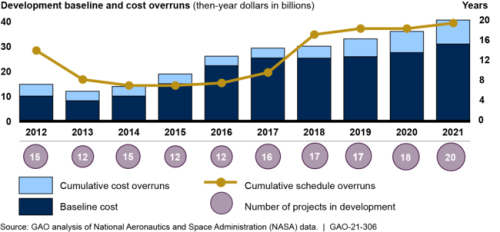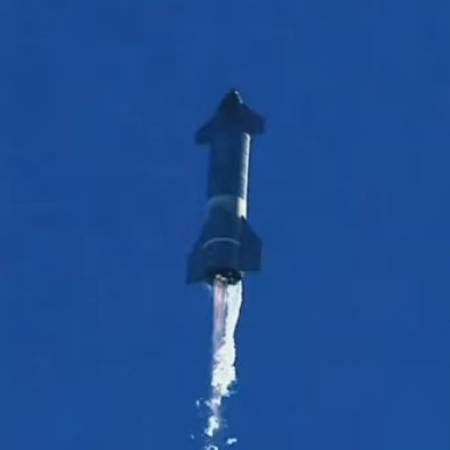GAO finds more NASA cost overruns in Webb, SLS, and Orion

The annual Government Accountability Office’s (GAO) report on major NASA-led programs has found that the cost overruns and scheduling problems it has documented now for years continued in 2020.
You can obtain the report here. The graph to the left, from the report, summarizes the data quite succinctly.
The cumulative cost overrun of 20 major programs in development, defined as those with total costs of at least $250 million, grew to more than $9.6 billion in the report. Three programs — the James Webb Space Telescope, Orion spacecraft and Space Launch System — account for $8 billion of that total, including $4.4 billion for JWST alone.
SLS and the Exploration Ground Systems program accounted for effectively all of the $1.1 billion in overruns in 2020. … SLS alone accounted for nearly $990 million in cost increases. About two-thirds of that increase came from NASA adopting a GAO recommendation to lower the original baseline cost estimate for SLS to properly account for work that had been shifted to later phases of the program.
The report also documented almost 20 years of cumulative delays, with Webb leading the way with delays of more than seven years. The new report added 37 more months of delays during the last year.
The report, and NASA, laid the blame for many of the more recent delays and cost overruns on last year’s COVID epidemic, but if so those delays were imposed by choice, not necessity, considering how both China and SpaceX moved forward without any delays during the same time period. In reporting on NASA for the last three decades I have found it willing to initiate long delays at the drop of a hat, sometimes for reasons, such as a storm that causes some minor damage, that do not justify either the delay or its length. The COVID panic was just another example of this.

The annual Government Accountability Office’s (GAO) report on major NASA-led programs has found that the cost overruns and scheduling problems it has documented now for years continued in 2020.
You can obtain the report here. The graph to the left, from the report, summarizes the data quite succinctly.
The cumulative cost overrun of 20 major programs in development, defined as those with total costs of at least $250 million, grew to more than $9.6 billion in the report. Three programs — the James Webb Space Telescope, Orion spacecraft and Space Launch System — account for $8 billion of that total, including $4.4 billion for JWST alone.
SLS and the Exploration Ground Systems program accounted for effectively all of the $1.1 billion in overruns in 2020. … SLS alone accounted for nearly $990 million in cost increases. About two-thirds of that increase came from NASA adopting a GAO recommendation to lower the original baseline cost estimate for SLS to properly account for work that had been shifted to later phases of the program.
The report also documented almost 20 years of cumulative delays, with Webb leading the way with delays of more than seven years. The new report added 37 more months of delays during the last year.
The report, and NASA, laid the blame for many of the more recent delays and cost overruns on last year’s COVID epidemic, but if so those delays were imposed by choice, not necessity, considering how both China and SpaceX moved forward without any delays during the same time period. In reporting on NASA for the last three decades I have found it willing to initiate long delays at the drop of a hat, sometimes for reasons, such as a storm that causes some minor damage, that do not justify either the delay or its length. The COVID panic was just another example of this.


